When I first arrived in Stockholm, I didn’t expect one of my favorite experiences to happen underground. I had read that the city’s Tunnelbana, or metro system, was special, but nothing prepared me for what I saw. As the train pulled into T-Centralen Station, the gray walls suddenly gave way to swirling shades of blue, painted vines, and sculpted stone that looked more like a cathedral than a train platform. I soon learned that Stockholm Subway Art is one of the city’s greatest treasures, an ever-evolving gallery carved into the bedrock beneath the capital.
Known as “the world’s longest art gallery,” Stockholm’s metro stretches over 100 stations, with more than 90 featuring art installations created by over 150 artists since the 1950s. Sculptures, mosaics, paintings, and installations transform ordinary commutes into artistic adventures. Each station has its own theme, atmosphere, and story, reflecting Sweden’s culture, history, and social evolution. This guide will take you through the best stations to visit, tips for exploring them, and a deeper look at how this extraordinary project came to life.
The History Behind Stockholm Subway Art
The story of Stockholm’s subway art began in the 1950s, when Swedish artists and city planners envisioned a metro system that would belong to everyone, not just as a means of transportation, but as a cultural experience accessible to all. Their goal was simple yet revolutionary: bring art into daily life.
Instead of building sterile, concrete tunnels, they invited artists to create immersive environments. Some stations resemble natural caves painted in vivid colors, while others feature sculptures, lighting effects, or mosaics that tell stories about Sweden’s society and identity. This approach made the Tunnelbana not just a public utility, but a democratic museum beneath the city.
Today, Stockholm’s subway art is celebrated globally for its creativity and inclusivity. It’s a living, breathing gallery that evolves with the city. New artworks are still being added, and the old ones continue to inspire locals and visitors alike.
How to Explore Stockholm Subway Art
Exploring Stockholm’s metro art is easy and affordable. All you need is a single SL metro ticket, valid for 75 minutes, and you can hop between stations freely. If you want to see more, consider buying a 24-hour pass, which lets you travel unlimited throughout the day.
For first-time visitors, I recommend starting your journey at T-Centralen, the main hub where all metro lines connect. From there, follow one of the lines outward and stop at the most artistic stations. Many locals even join guided tours organized by SL, where art historians explain the meaning and history behind each installation. I took one of these tours during my second visit, and it completely transformed how I saw the metro. It went from being visually stunning to deeply meaningful.
If you prefer exploring independently, travel during off-peak hours when the platforms are quieter. Take your time to walk around, look up at the ceilings, and notice the details. Each station feels like stepping into a new world.
The Most Beautiful Stations in Stockholm’s Metro
1. T-Centralen (Blue Line)
Theme: Calm and Connection
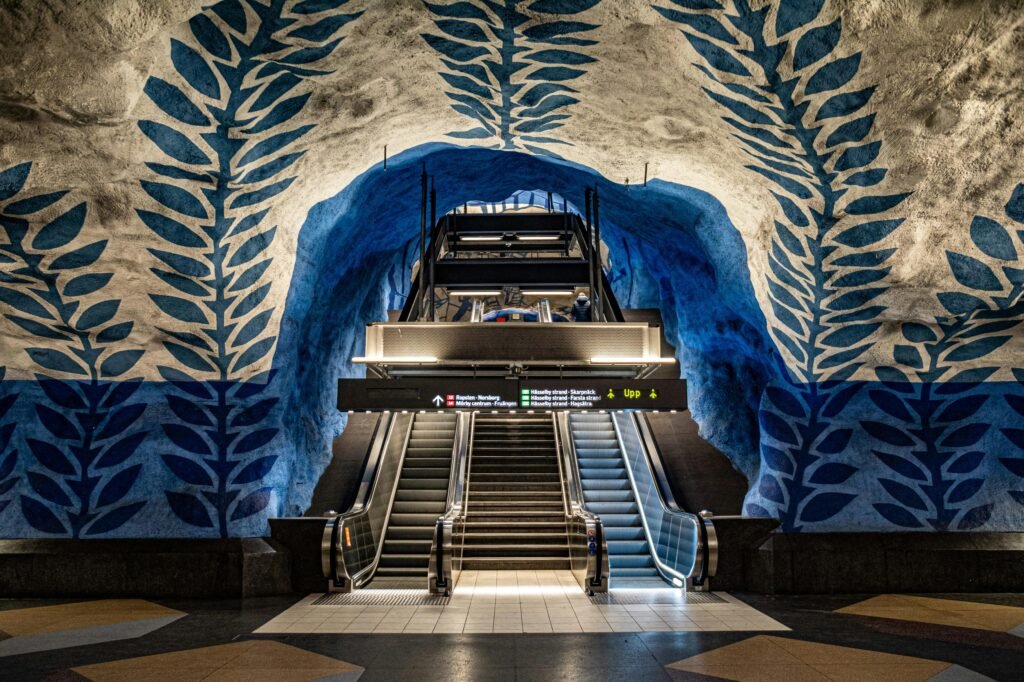
Located at the heart of the network, T-Centralen is the most famous station and often the first one visitors see. The walls and ceilings are painted in deep shades of blue, decorated with white leaf patterns and floral motifs that create a sense of calm amid the city’s busiest hub. Artist Per Olof Ultvedt designed the artwork in 1975 to honor the workers who built the station, and the human silhouettes you see painted along the pillars represent them.
Standing here feels peaceful despite the movement of trains and passengers; it’s as if the artwork softens the chaos of daily life. I remember sitting on a bench, watching commuters rush by while the blue walls glowed under soft light. It felt like being inside a modern fresco.
2. Solna Centrum (Blue Line)
Theme: Nature and Environmental Awareness
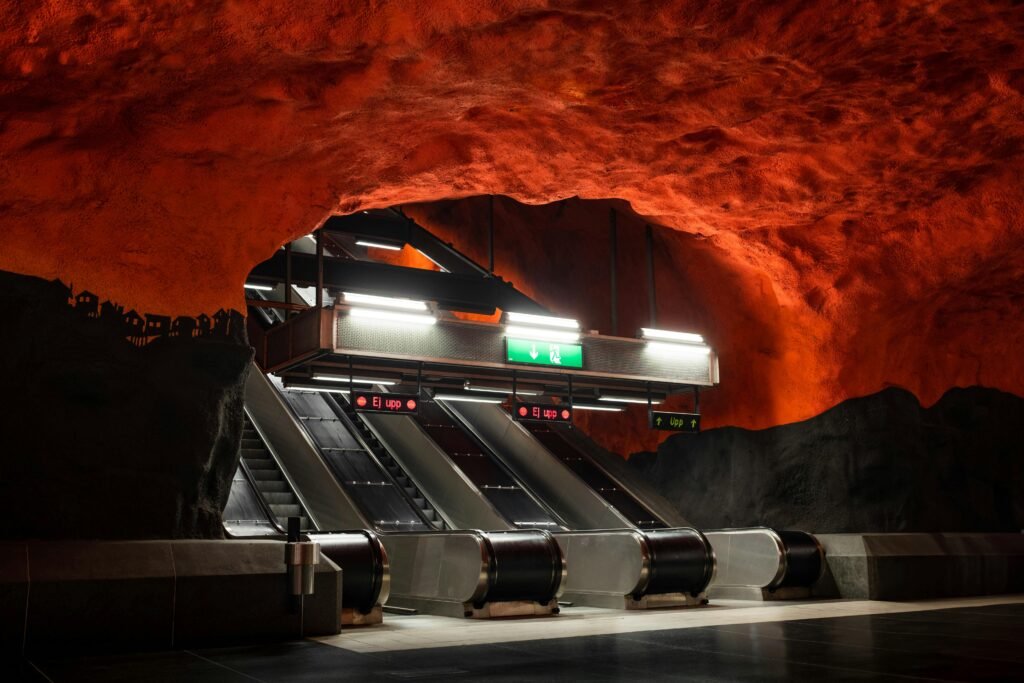
Solna Centrum is one of the most dramatic and photogenic stations in Stockholm’s metro. The walls are painted in bright red, while the lower parts transition into lush green forests. It looks as though you’re standing inside a fiery sunset deep in the woods. The artists, Anders Åberg and Karl-Olov Björk, created this design in the 1970s to highlight the environmental and social issues of rural Sweden at the time.
The red symbolizes the disappearing forests and the environmental degradation caused by urbanization. The green fields and small houses represent the countryside communities that were slowly vanishing. Beyond its beauty, Solna Centrum carries a message about balance between progress and nature—a theme that remains relevant today.
3. Kungsträdgården (Blue Line)
Theme: History, Time, and Transformation
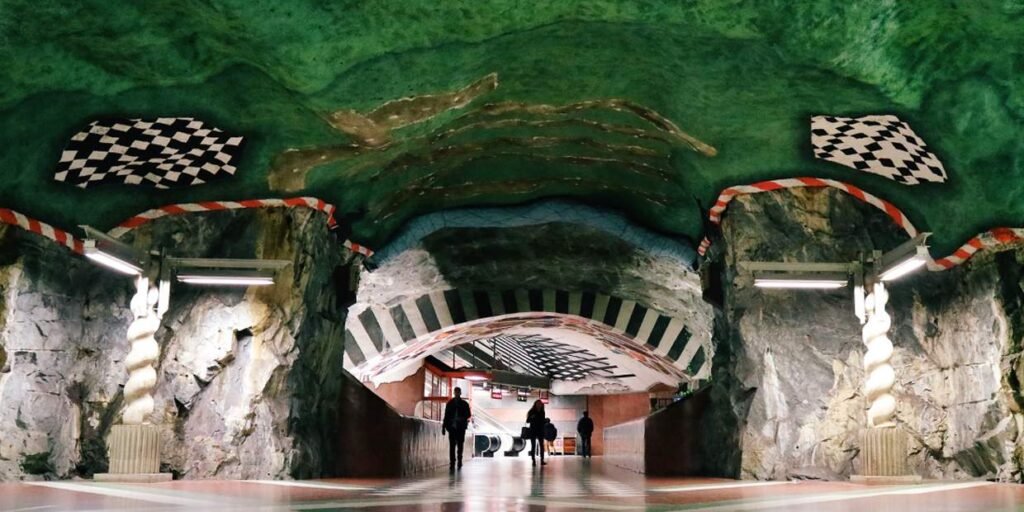
Located near the Royal Palace, Kungsträdgården is one of the most visually striking stations. The ceiling resembles ancient ruins, painted in shades of red, green, and white, with fragments of statues and columns embedded into the walls. Artist Ulrik Samuelson designed it to reflect the changing landscape of the surrounding area, which once housed royal gardens and 17th-century palaces.
Walking through this station feels like exploring an archaeological site. The floor tiles mimic baroque patterns, and there are real artifacts from demolished buildings incorporated into the design. It’s one of my personal favorites because it feels like a bridge between the past and present—a metaphor for Stockholm itself.
4. Stadion (Red Line)
Theme: Celebration and Unity

Stadion Station is known for its enormous rainbow mural arching across a sky-blue cave-like ceiling. It was one of the first stations built directly into Stockholm’s natural bedrock, and the rough stone texture enhances the dramatic colors. Created in 1973 by artists Åke Pallarp and Enno Hallek, the rainbow symbolizes diversity, inclusivity, and optimism.
During my visit, I noticed how the light seemed to dance along the curved walls, illuminating the bright colors and creating an almost celestial feeling. Stadion is located near the 1912 Olympic Stadium, and the rainbow also represents the joy and spirit of the Olympic Games. It’s a symbol of unity that continues to resonate with Stockholm’s multicultural identity today.
5. Rådhuset (Blue Line)
Theme: Archaeology and Urban Life

At Rådhuset Station, you’ll feel as though you’ve stepped inside a massive underground cave. The rock walls are left in their natural reddish-brown state, giving the space an earthy, ancient atmosphere. The design by artist Sigvard Olsson was inspired by the idea of “urban archaeology,” exploring how cities grow layer by layer over time.
The station’s rough stone textures contrast beautifully with its modern escalators and lighting, symbolizing the connection between Stockholm’s natural foundation and its contemporary urban development. Rådhuset is one of the best examples of how the metro system integrates raw nature into human design, creating something uniquely Scandinavian in its harmony between environment and art.
6. Tekniska Högskolan (Red Line)
Theme: Science and Innovation
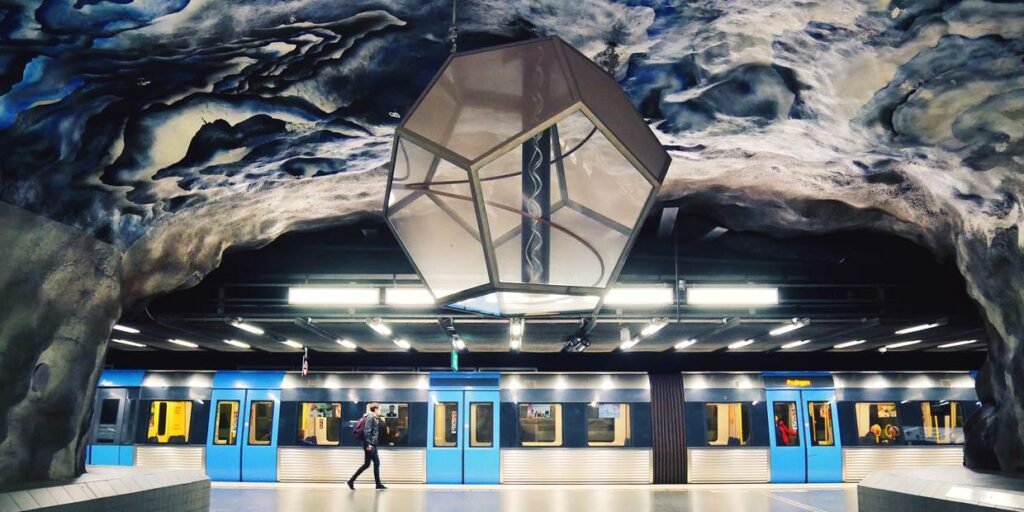
Located near the Royal Institute of Technology, Tekniska Högskolan Station celebrates scientific discovery and progress. The artwork features geometric patterns, metallic sculptures, and planetary models that represent the five classical elements: water, fire, earth, air, and ether. The central piece, a large dodecahedron, symbolizes the mathematical beauty of the universe.
As a traveler who loves art and science, this station fascinated me. It captures Sweden’s forward-thinking spirit and commitment to innovation, while still feeling poetic and mysterious. It’s one of those places where you find yourself staring at the ceiling, realizing that even science can be beautiful when expressed through art.
7. Thorildsplan (Green Line)
Theme: Pixel Art and Playfulness
If you love modern digital art, Thorildsplan Station is a delightful surprise. The walls are decorated with bright pixelated patterns inspired by classic video games like Super Mario and Space Invaders. The playful design was added in 2008, making it one of the newer additions to the metro art collection.
It’s a perfect stop if you’re traveling with kids or if, like me, you enjoy a touch of nostalgia and humor in art. It’s small, colorful, and fun, showing how Stockholm’s subway art continues to evolve with new generations of artists and ideas.
- Get a Day Pass: Purchase a 24-hour SL ticket so you can explore multiple lines without rushing.
- Join a Guided Tour: SL offers free guided tours in English during the summer, usually starting at T-Centralen. Check the SL website for updated schedules.
- Visit During Off-Peak Hours: Early mornings or late evenings are ideal for photos and quiet exploration.
- Plan Your Route: The Blue Line has the most visually dramatic stations, but each line has unique gems worth seeing.
- Bring a Camera: Photography is allowed, and every station has its own color palette and composition. Use natural light from station fixtures for beautiful shots.
Final Thoughts About Stockholm Subway Art
The Stockholm Subway Art is more than a public art project; it’s a reflection of Sweden’s creativity, equality, and connection between people and place. Each station tells a story, from the environmental messages of Solna Centrum to the historical echoes of Kungsträdgården and the futuristic wonder of Tekniska Högskolan. Together, they form a tapestry of ideas that turn everyday travel into something inspiring.
For me, exploring the Tunnelbana was one of the most memorable experiences in Stockholm. It reminded me that art doesn’t need to hang in a museum to be powerful. Sometimes, it’s in the places we least expect, in the tunnels beneath our feet, lighting our way through the rhythm of daily life.
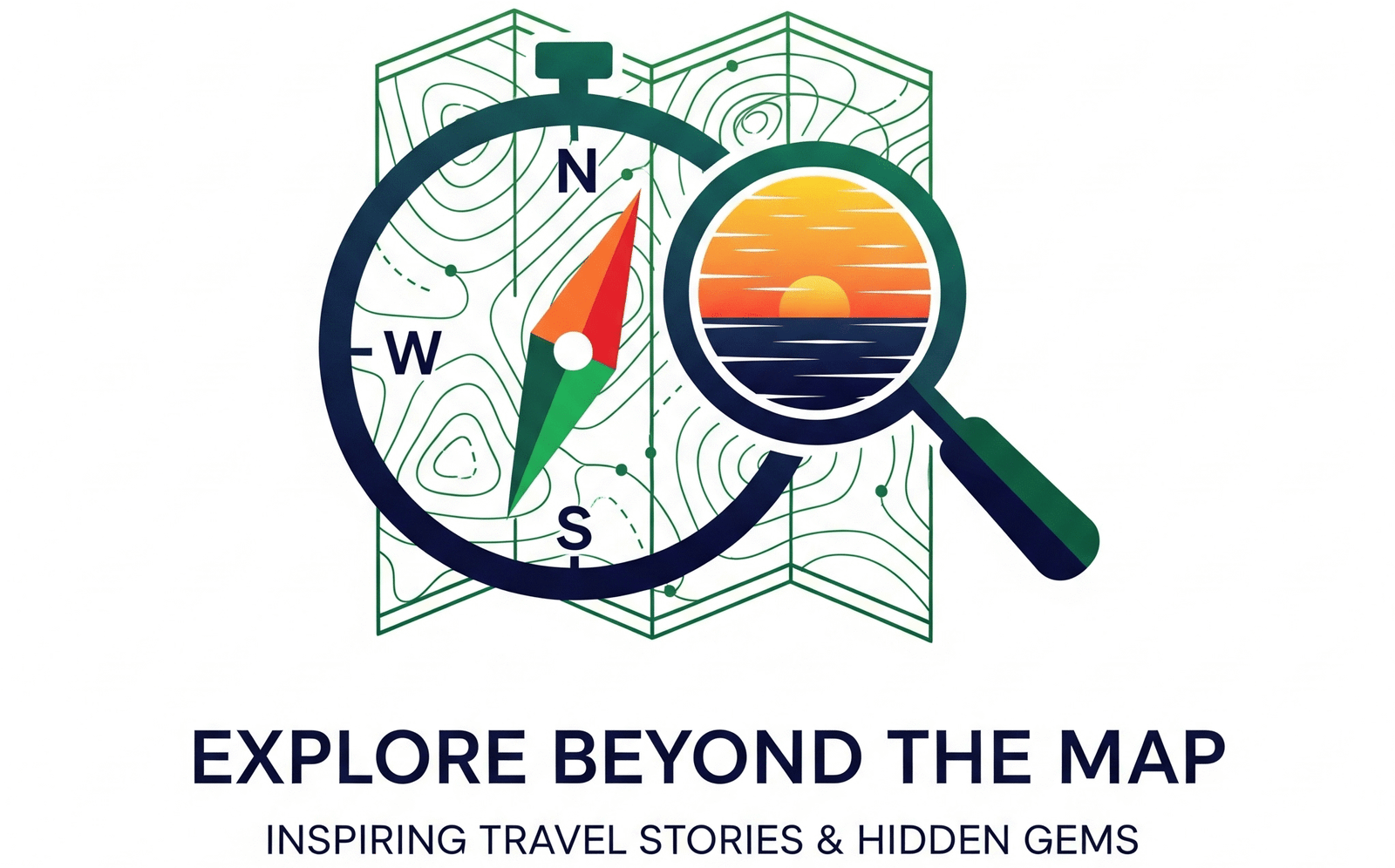

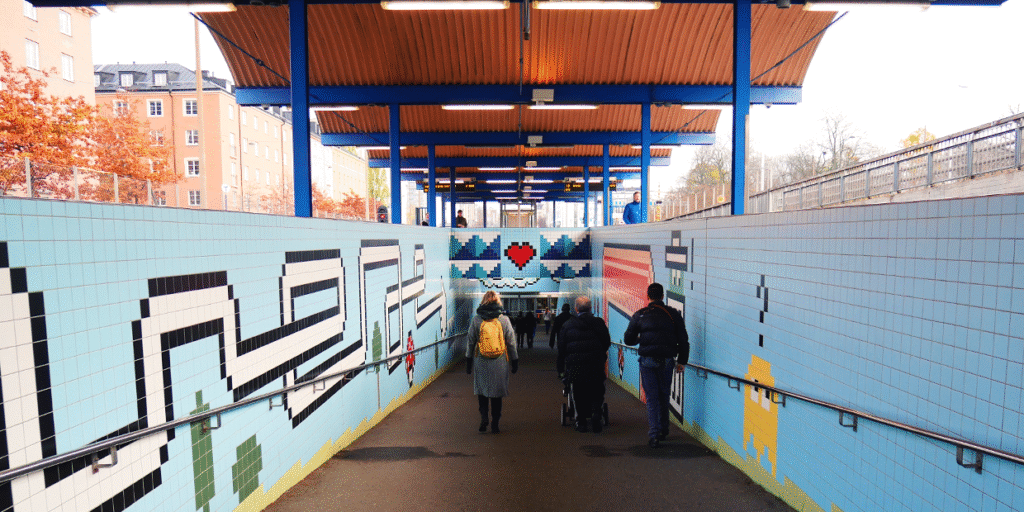




Leave a Reply